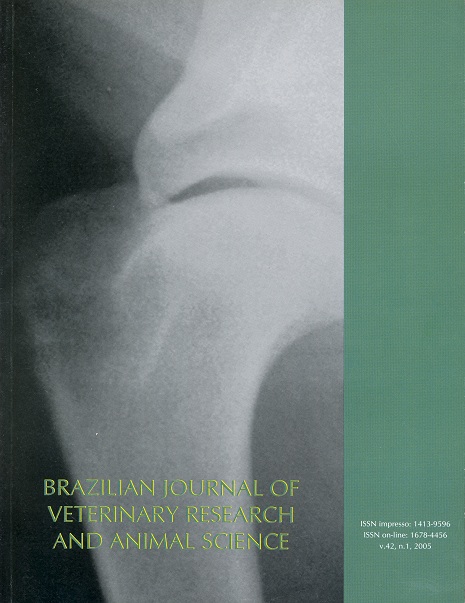Experimental use of a castor bean (Ricinus communis L: ) oil derived polymer on lamellar, interlamellar and penetrating implants in rabbit's cornea
DOI:
https://doi.org/10.11606/issn.1678-4456.bjvras.2005.26451Keywords:
Carbamates, Prostheses and implants, Cornea, RabbitsAbstract
The purpose of this study was to investigate the feasibility of using membranes made of a castor bean oil polymer as a new material for corneal repair or keratoprosthesis. The polymer shows good biocompatibility when used as prosthesis material on various sites (e.g. testis, bone, teeth). Twenty-eight rabbits weighing from 2.5 to 3.5 Kg were submitted to lamellar, interlamellar and penetrating keratoplasties. Clinical and histopathological evaluations were performed from the 2nd to the 120th post-operative day. Lamellar and penetrating implants presented good corneal cicatrization, although all membranes were extruded around the 15th day. All globes submitted to penetrating keratoplasties kept the integrity of the anterior chamber, with some of them showing some degree of synechiae. Interlamellar implants did not present important clinical reactions. The histopathological study demonstrated few inflammatory signs in all implants, with some epithelial linning appearing over the penetrating grafts. It was concluded that the castor bean oil polymer presented good biocompatibility and may be used in emergencial situations for temporary closure, as a globe salvage procedure. It is suggested that the castor bean oil polymer should be further studied in keratoprosthesis, due to its advantages (good biocompatibility, lower price and vast shape, porosity, thickness and refractive index possibilities).Downloads
Download data is not yet available.
Downloads
Published
2005-02-01
Issue
Section
UNDEFINIED
License
The journal content is authorized under the Creative Commons BY-NC-SA license (summary of the license: https://
How to Cite
1.
Morales A, Barros PS de M, Barbieri Neto J, Chierice G, Claro Neto S, Migliati ER. Experimental use of a castor bean (Ricinus communis L: ) oil derived polymer on lamellar, interlamellar and penetrating implants in rabbit’s cornea. Braz. J. Vet. Res. Anim. Sci. [Internet]. 2005 Feb. 1 [cited 2024 Apr. 19];42(1):31-6. Available from: https://www.revistas.usp.br/bjvras/article/view/26451





